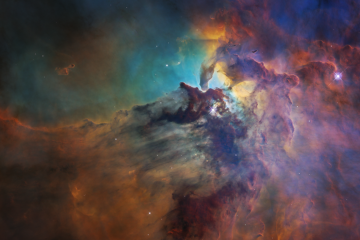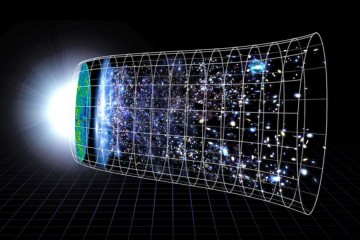- Name
- Jon Schroeder
- jon.schroeder@jhu.edu
- Office phone
- 410-516-8594
A group of Johns Hopkins cosmology theorists has offered a theory that the cause of the so-called "Hubble Tension" in cosmology may be resolved by the presence of a new exotic form of matter in the early universe.
In a recent paper posted on arXiv, the authors refer to this exotic form of matter as "early dark energy." The implications of this resolution of the Hubble Tension, if it withstands future observational tests, are profound and raise intriguing new questions for fundamental physics.
The Hubble Tension refers to one detail in the current model for the evolution of the universe that has not been resolved: the rate at which the universe is expanding. Scientists can arrive at the rate of expansion in two different ways, and the two techniques result in slightly different rates.
Scientists who infer the rate of expansion from observations of the cosmic microwave background, the relic gas of radio frequency radiation left over from the Big Bang, conclude that we're expanding at a rate of 67.7 kilometers per second per megaparsec, which is approximately 3 million light-years. Those who observe stellar explosions, or supernovae, in the nearby universe and study how they move in relation to Earth come up with 73.5 kilometers per second per megaparsec.
The uncertainties in both the supernova and CMB measurements are small enough that the disagreement between the two is statistically significant. This "Hubble Tension" has taken center stage in cosmology: it suggests that there may be new laws of physics required to account for the discrepancy.
"A growing mystery about the universe, known as the 'Hubble Tension,' is that it appears to be expanding much faster now than predicted even with our latest understanding of its initial conditions and contents," says Adam Riess, a Bloomberg Distinguished Professor and Nobel laureate who is an expert in the Hubble constant. "This new paper is the first to provide a possible explanation—that the early universe received an infusion of dark energy soon after the Big Bang giving it a boost—which better matches all observations. This theory shows how this 'tension' may actually be revealing a new feature of the universe. It also makes predictions which can be tested so that more measurements should tell us if it is correct."
The paper shows that if the new exotic matter takes the form of a cosmological constant (like that required to explain the accelerated cosmic expansion in the universe today), agreement can be achieved between CMB measurements and theoretical expectations in the standard model using supernovae. In fact, the data seem to fit together slightly better with the early dark energy theory. As the paper shows, more precise measurements of the CMB in the future should further test the newly proposed scenario.
The early dark energy resembles that seen in the universe today, although with a density nearly 10 billion times as large. It also resembles the dark energy in the very earliest universe that has been postulated to set the expansion in motion. Combined, these observations suggest that the universe may undergo episodic periods where dark energy becomes important, and if so, the dark energy in the current universe may be just be the latest incarnation.
The work was led by Vivian Poulin, a postdoctoral fellow; graduate student Tanvi Karwal; Marc Kamionkowski, a professor in the Department of Physics and Astronomy; and Tristan Smith, a Swarthmore College professor spending a sabbatical at Johns Hopkins.
Posted in Science+Technology
Tagged adam riess, cosmology, nasa, hubble, physics and astronomy, marc kamionkowski, dark matter










